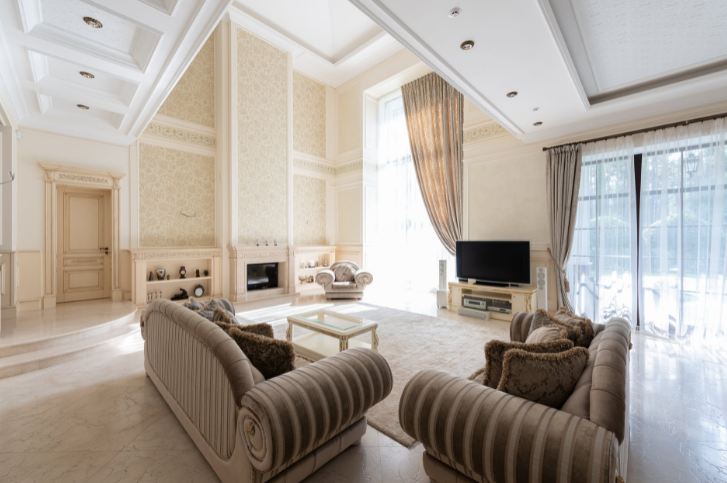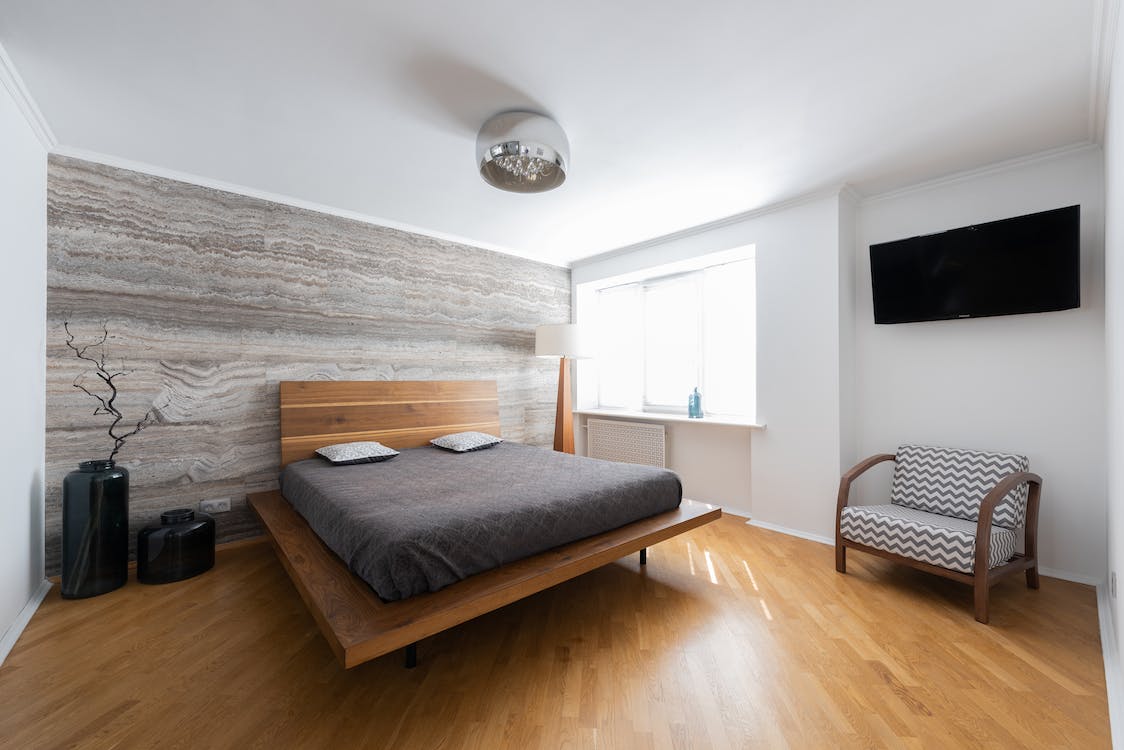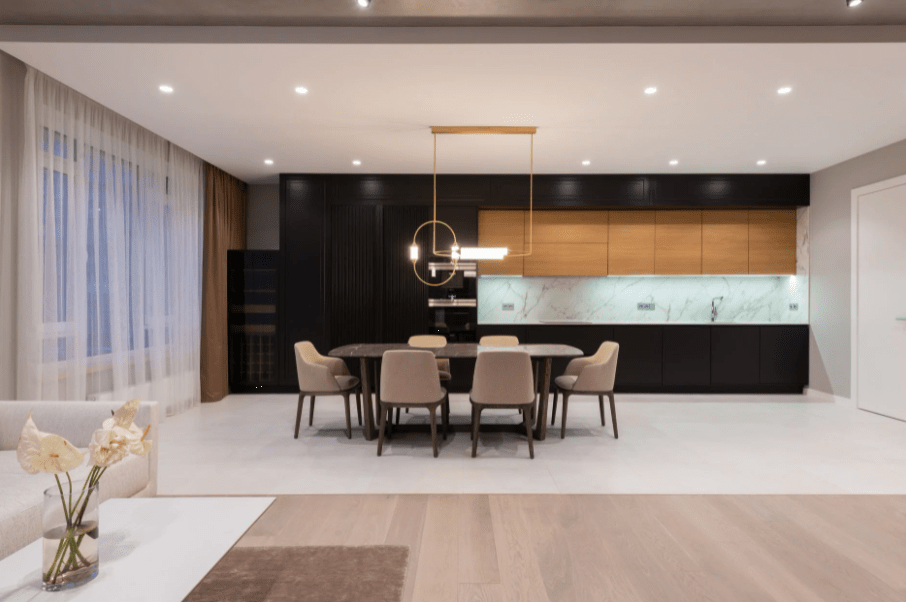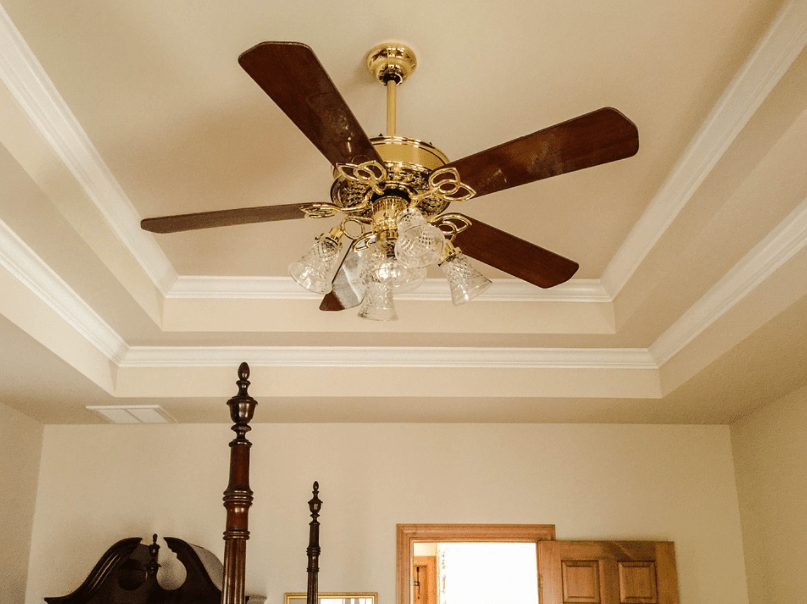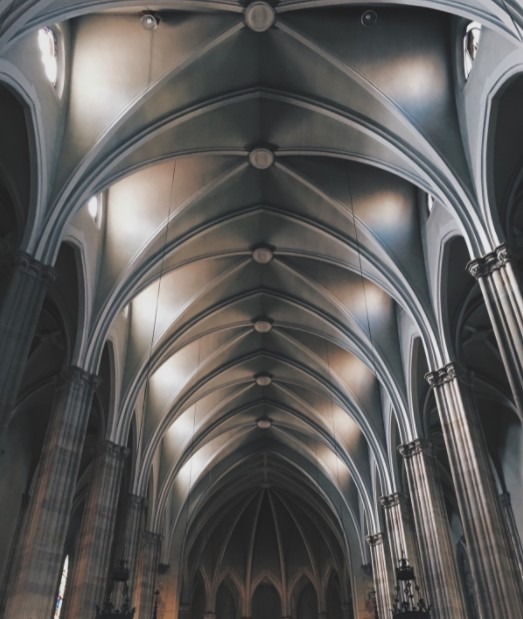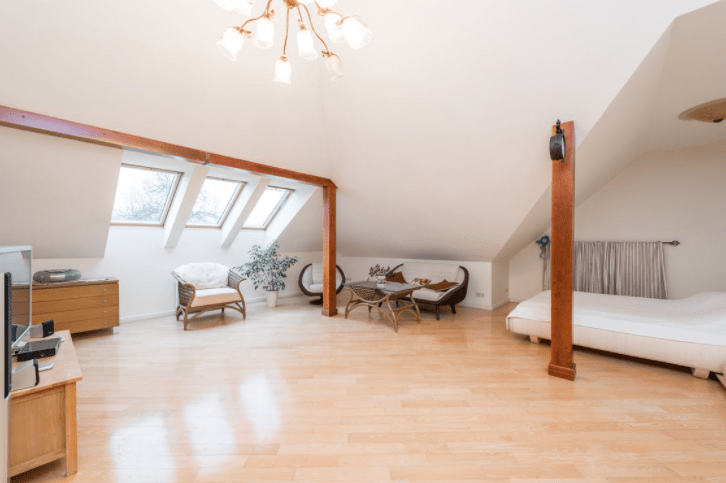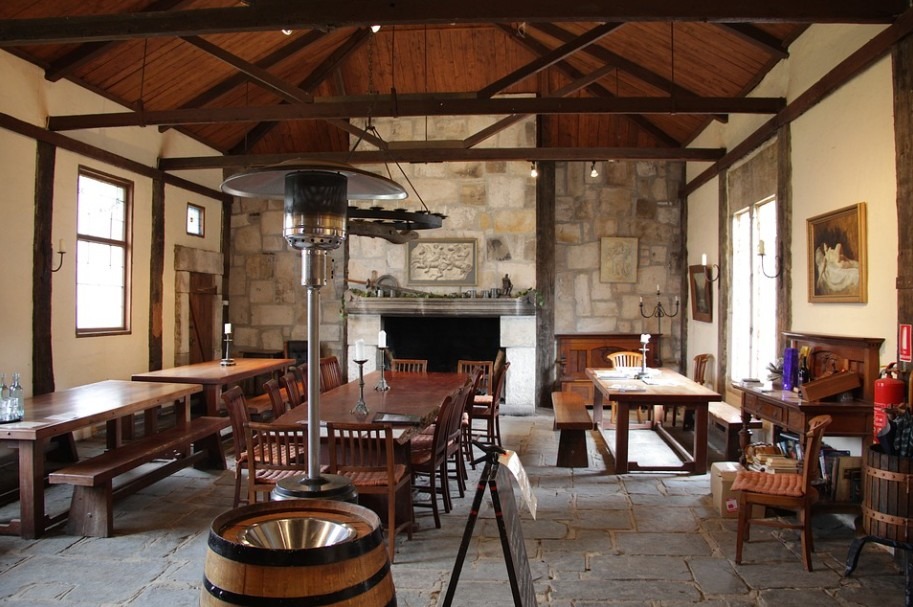Ceilings are among the most important elements of a home’s architecture as they play a crucial role in creating a comfortable, functional, and aesthetically pleasing living space. At the present time, there are many different types of ceilings available, and each of them offers unique characteristics, benefits, and drawbacks. Whether you are building a new home or renovating an existing one, picking the right type of ceiling is important in order to achieve the desired look and feel for your living space.
If you are going to choose a type of ceiling for your home soon but can’t decide which one, the first important step is knowing what your options are. In this article, we are going to explore the various types of ceilings that are best for homes, along with their design options and other factors to consider. This way, you will have a better understanding of the different types of ceilings available today and be better equipped to pick the one that will best suit your personal style and needs to enhance the ambiance and functionality of your home.
Conventional Ceiling
A conventional ceiling is also called a flat ceiling. It is the most common type of ceiling that you may see in most homes. It is installed at a standard height and level across the whole room, which is usually between 8 to 9 feet high. A conventional ceiling is usually composed of drywall, plaster, or other similar material that is attached to the ceiling joists or a grid system.
Advantages
There are several advantages when it comes to installing a conventional ceiling. One is that it is cost-effective. Conventional or flat ceilings are the most affordable type of ceiling to install in homes, which is great if you are on a budget. Aside from that, it is also very easy to install and requires minimal labor and materials.
Many people opt for conventional ceilings as they are able to hide unsightly electrical wires and ductwork, which creates a clean and polished look for the whole room. Flat ceilings also come in different design options. They can be painted or finished in various textures. They can also reflect light more evenly throughout the room, enhancing lighting. It is a practical and functional choice for those who are looking for a simple and affordable ceiling option that can match various interior designs.
Disadvantages
One of the drawbacks of installing a conventional ceiling is that it has limited design options to choose from. Aside from that, it can also make a room appear smaller, especially in rooms that have low ceilings. You also have to note that conventional ceilings are prone to cracks and stains, and they may need regular maintenance and repairs to maintain their look. A flat ceiling also does not add value to most homes because they are a standard feature, unlike other unique or high-end ceiling types.
Popular Design Options
Conventional ceilings may not offer as many design options compared to other ceiling types, but there are still several ways in which you can make them visually appealing. Below are some of the popular design options you can choose from for conventional ceilings:
- Paint: You can paint a conventional ceiling in different colors and finishes to create a customized look that complements the theme or design of a room.
- Trim and Molding: You can also add decorative trim and molding to the edges of a flat ceiling to create a sense of depth and dimension.
- Ceiling Medallions: These are decorative pieces that can be installed in the center of a ceiling. They can add a touch of elegance and sophistication to any room.
- Lighting: It is also a great idea to add some unique lighting fixtures to a conventional ceiling. This can draw the eye upward and create a focal point in the room.
- Textured Finishes: If you do not want the conventional ceiling to look too plain, it can be finished with a textured material like plaster. This will help create a visually interesting surface that also adds depth and dimension to the room.
Conventional ceilings may be the simplest, but there are many ways to make them visually appealing. You can click here to read more about conventional ceilings.
Suspended Ceiling
A suspended ceiling is also sometimes called a drop ceiling or a false ceiling. It is a bit different from the conventional one. While it is still a flat ceiling, it is built below an existing ceiling. It includes a lightweight acoustic panel and a suspended metal grid. The grid is attached to the existing ceiling, and the panels are inserted inside the grid.
This type of ceiling lowers the original height of the ceiling by around 6 inches. However, it sometimes becomes a problem in basements where it is usually used. You also have to note that installing a suspended ceiling requires precision and expertise to avoid damaging wires, pipes, and ductwork.
Advantages
One of the main advantages of having a suspended ceiling is that it hides unsightly components like wiring, ductwork, and other mechanical components to make the room cleaner and more polished. In addition to that, a suspended ceiling can be removed or lifted easily if you need access to the space above the ceiling for repairs or maintenance.
Suspended ceilings are also known to be energy efficient as they add insulation and reduce heat loss. They can also help improve the acoustics of the room by absorbing sound and reducing noise transmission, which is great if your home has a second floor.
Disadvantages
Suspended ceilings can lower the height of a room, which makes it feel smaller. They can also limit or reduce headroom in a space, which can be a problem in areas where people need to move around freely or where tall furniture pieces are usually placed. Aside from these, suspended ceilings can also reduce the amount of natural light that enters a room.
One of the main disadvantages of suspended ceilings is the amount of time and effort it takes to install them, as well as the cost. This type of ceiling is more expensive due to the additional materials and labor needed for installation.
Popular Design Options
There are many options to choose from when it comes to suspended ceilings. You can pick from a variety of materials, colors, and patterns to suit any style or preference. Below are the popular design options for suspended ceilings:
- Ceiling Tiles: You can install suspended ceilings with different ceiling tiles made of materials like metal, gypsum, and mineral fiber. Each of them has its own unique pattern, color, and texture.
- Lighting: Suspended ceilings can be used to add lighting fixtures to create a customized look that matches the design of the room.
- Acoustic Panels: You can use acoustic panels to design a suspended ceiling. These panels can absorb sound to create a quieter and more comfortable environment in your living space.
- Color and Moldings: You can also paint suspended ceilings in various colors as well as add some decorative moldings or trims to their edges to create a sense of depth and dimension.
Suspended ceilings may not be the best option for all spaces, but they come with many benefits. It is a great choice if you are looking for a versatile and practical type of ceiling that will enhance the look of your space. You can click here to read more about suspended ceilings.
Tray Ceiling
Tray ceilings are also known as panned ceilings or recessed ceilings. They are often found in kitchens and dining rooms and are built upwards in a cut-out resembling a tray. They feature a rectangular center that is either popped out or inverted to add an effect. The “tray” can be 6 inches to one foot or deeper. There are times when a series of steps are added for a more dramatic effect. If you are considering a tray ceiling, you need to ensure that the ceiling height is at least 8 feet tall because dropped borders that go below this height may make a space feel and appear tighter than tall.
Advantages
The main advantage of a tray ceiling is that it can add architectural interest and visual appeal to any room. It creates a focal point that draws the eye upward. Aside from that, it can also make a room feel taller and bigger, creating a sense of depth and dimension, which can be effective in smaller spaces.
Tray ceilings may come in different shapes and sizes, which allows endless design possibilities to match any room theme or style. Installing a tray ceiling may also enhance the aesthetic appeal of your home and potentially increase its resale value.
Disadvantages
Tray ceilings are more complex to install and it needs a skilled professional to ensure proper installation. With this, you can also expect it to be costly due to additional labor and materials needed for its installation. Also, tray ceilings are not suitable for rooms that have low ceilings because they need additional height to accommodate the recessed or raised section. The raised or recessed part of a tray ceiling may also need additional maintenance, such as repainting and cleaning.
Popular Design Options
Tray ceilings may come in a variety of designs, and you can also customize them to suit your home’s style and your personal preferences. Below are some examples of the most popular design options for tray ceilings:
- Crown Molding: It is a great idea to add decorative crown molding to the edges of a tray ceiling. Doing so will create a sense of depth and dimension and will add style to your ceiling.
- Inlay Design: You can also design tray ceilings with intricate inlay patterns to add a touch of elegance and sophistication to any room.
- Textured Finish: If you want to create a unique look and feel, you can also add a textured finish to the recessed or raised part of a tray ceiling. This will also make the ceiling look more interesting.
Tray ceilings are a versatile and stylish ceiling option that may help increase the value of your property. You can check out this link for more information about tray ceilings.
Coffered Ceiling
A coffered ceiling creates a waffle-like pattern as it is made up of a grid of sunken panels accented by molding. It is among the most classic ceiling styles that are often found in luxury and high-end homes. Many years ago, coffered ceilings were works of art made using prized wood or carved stone. Today, it is available for the cost of a suspended ceiling. If you are thinking of installing coffered ceilings in your home, the minimum ceiling height needed is 9 feet. It also requires expert carpentry and a specialized installation process.
Advantages
The main benefit that you can get from a coffered ceiling is visual interest, as it can add visual appeal to any room. It can also make a room feel taller and bigger. Since coffered ceilings also have recessed panels, they can help absorb sound to create a quiet and more comfortable ambiance in a room. Coffered ceilings are also highly customizable, and they come in different shapes and sizes.
Disadvantages
The main drawback of a coffered ceiling is its cost. It is generally more expensive compared to other types of ceilings. Another thing is that it requires additional height to accommodate the recessed panels, which is not suitable for spaces with low ceilings. In addition to its complex installation process, coffered ceilings may also require additional maintenance like repainting and cleaning, which may also take a lot of time.
Popular Design Options
There are a variety of design options for coffered ceilings to create a unique and customized look for any space in your home. Below are some of the popular design options for coffered ceilings:
- Size and Shape: There are different shapes and sizes available for coffered ceilings. These include square, hexagonal, and rectangular. You can pick a unique shape if you aim to create a striking visual impact.
- Material: Coffered ceilings can be made using different materials, such as plaster, metal, or wood. You can choose a unique material that can add texture and interest to your ceiling.
- Panel Design: You can also design the panels of a coffered ceiling with various patterns and shapes to make it more visually appealing.
You can choose to add a coffered ceiling to your home if you are aiming to make it look more luxurious. You can click here to read more about coffered ceilings.
Cathedral Ceiling
Cathedral ceilings are also known as vaulted ceilings. They are commonly high and have equally sloping sides that form an upside-down V at the highest point possible. This type of ceiling is directly attached to the roof trusses, and it rises all the way to the top of the house. A cathedral ceiling usually soars to 15 feet or higher. Therefore, the trusses themselves should be wide enough to allow proper ventilation and proper insulation.
There are also different types of cathedral ceilings depending on the shape of the scaffolding. One type is a barrel which consists of a single curved arch. It is built under the rafters of the room. Another type is the groin, which has two-barrel vaults that intersect at 90 degrees angles to create four convex or outward-curving ribs that rise from the corners of the room. There is also the cloister cathedral ceiling which is a bit similar to the groin vault ceiling. Its arch rises from the middle of each wall and not the corners. It also has concave ribs, and they curve inward. Lastly, there is the domed cathedral ceiling, which is a vaulted type of ceiling with a central spherical arch.
Advantages
One of the most significant advantages that you can get from a cathedral ceiling is its height and space. It creates a sense of openness and grandeur in a room, making it feel airier and more spacious. Aside from that, this type of ceiling also provides a great opportunity to let natural light in, which is great for energy conservation.
Cathedral ceilings are also visually stunning, and they can transform a simple room into an extraordinary area. With this, they can also add value to your home, making it more attractive to potential buyers.
Disadvantages
Cathedral ceilings can be more challenging to insulate and heat or cool, which results in higher energy costs. In addition to that, since they are very high, they are more difficult to clean. The shape and design of cathedral ceilings are mostly difficult to install lighting fixtures. This may limit the lighting options for a room with a cathedral ceiling. Also, due to their unique shape and size, they may also be difficult to decorate. Lastly, building or renovating a home with a cathedral ceiling is more expensive as additional materials and labor are needed for installation.
Popular Design Options
There are various design options that you can choose from for cathedral ceilings in order to create a unique and customized look for any room in your house. Below are some popular design options for cathedral ceilings:
- Skylights: You can install some skylights in a cathedral ceiling to let natural light in and provide a beautiful view of the sky in your home.
- Ceiling Fans: You also have the option to add ceiling fans in a cathedral ceiling if air circulation needs to be improved in a room.
- Lighting: You can install unique lighting fixtures to cathedral ceilings, such as pendant lights, chandeliers, and recessed lighting.
- Arched Design: You can choose a cathedral ceiling with an arched design as it can create an elegant and sophisticated look in a room, making it look more luxurious.
Cathedral ceilings are great for very large homes, particularly those that have grand living rooms and foyers. You can click here to learn more about cathedral ceilings.
Coved Ceiling
A coved ceiling is characterized by curved molding that starts from the main walls of the room up to the actual ceiling. This creates a round concave surface at the side. A coved ceiling provides a smooth transition that makes the room look softer and subtler. Most of the time, it is painted white to match the color of the floor molding. This type of ceiling is commonly seen in formal rooms and it sometimes serves as arches separating one living space from another.
Advantages
A coved ceiling can add visual appeal to any room by creating an elegant and sophisticated look. It can also help soften the lighting in a room by reflecting light off the curved surface, making the space look warm and inviting. Coved ceilings are also great for hiding imperfections in the ceiling or wall, making them a great choice for older or historic homes with irregular ceilings and walls.
Coved ceilings are great for rooms that have limited ceiling height, as they can create the illusion of added space and height without sacrificing headroom. They are also very easy to maintain and clean as they do not have any corners or edges that can collect dust or debris.
Disadvantages
Compared to conventional ceilings, coved ceilings are more expensive and complex to install. It may also not be suitable for all room styles or design preferences. It is also challenging to install light fixtures, ceiling fans, and other ceiling-mounted accessories due to its curved surface. This type of ceiling also limits the available space for hanging artwork on the walls. Lastly, it is quite difficult to repair as the curved surface needs specialized repair techniques.
Popular Design Options
There is a range of design options to choose from for coved ceilings if you are aiming to complement different décor styles. Below are some of the popular design options for coved ceilings:
- Simple and Subtle: You can choose a simple and subtle coved ceiling that can make a room look elegant without being overpowering. It is usually a shallow curve with a plain, unadorned surface.
- Ornate and Decorative: If you want a more elaborate look, you can incorporate curves, details, and intricate patterns into a coved ceiling. This design option needs a deeper curve and may include ceiling medallions and decorative moldings.
- Colorful: You can paint a coved ceiling with a variety of colors if you want a playful or dramatic effect. Soft and muted tones are great if you want to create a relaxing and calming ambiance, while bold and bright colors are great if you want to have a vibrant room.
- Multilevel: There are multilevel coved ceilings that can help add dimension and depth to a room by adding various levels and shapes.
- Backlit: You can also choose backlit coved ceilings as they can make a room look warmer and inviting. It is best for bedrooms and living rooms where soft lighting is usually desired.
Coved ceilings can surely add visual appeal to any room. You can click here to read more about coved ceilings.
Shed Ceiling
A shed ceiling is mostly seen in homes with attic spaces. It is also sometimes called a single-slope ceiling. It features a slope that slants upward to one side. The rising angle of a shed ceiling is not steep compared to a cathedral ceiling. This means it can provide better insulation and ventilation. Shed ceilings also look better when covered in the classic headboard.
Advantages
Shed ceilings provide more vertical space in a room, making it appear larger and more spacious. It is beneficial in rooms or attic spaces where headroom is limited. These ceilings can also let natural light enter a room as they usually feature skylights or large windows on the sloped part of the ceiling. They can also improve the acoustics of a room by reducing echo and sound bounce.
Disadvantages
A shed ceiling may limit the storage space in a room, particularly if it is very steep. Also, due to the slope of the ceiling, installing light fixtures can be more challenging. In rooms with shed ceilings, temperature variations are more noticeable. It’s because warm air tends to rise, and the upper part of the room may be warmer than the lower part, which can sometimes feel uncomfortable. Shed ceilings are also more expensive than traditional ceilings, and they are not suitable for all décor styles, especially if your home has a more traditional or classic style.
Popular Design Options
If you are looking to add a unique and modern touch to your home, shed ceilings can be a great choice. Below are some popular design options for shed ceilings:
- Exposed Beams: If you want to add warmth and texture to a shed ceiling, you can install some exposed beams. This can create a rustic or industrial vibe to a room.
- Skylights: As mentioned earlier, skylights are popular additions to shed ceilings. It allows more natural light to enter a room and gives a beautiful view of the sky and surrounding landscape.
- Paint or Wallpaper: The slope of a shed ceiling is also an ideal canvas for creative paint or wallpaper designs.
- Angled Walls: You can match the slope of the ceiling by making the wall angled, creating a cohesive and harmonious design in a room.
Shed ceilings are perfect for those looking for a modern and functional design option for their homes. You can click here to learn more about shed ceilings.
Beamed Ceiling
Beamed ceilings are very popular in modern rustic and contemporary-styled homes. But it is a traditional ceiling style where the load-bearing beams are exposed to the inside of the house. This ceiling style creates an interesting depth and contrasts with the ceiling. The beams are often made using hardwood. But some houses use light-weight faux beams that are made only for visual impact. Most of the time, beamed ceilings are installed in the living rooms and dining rooms of bigger homes.
Faux wood is a great alternative to solid wood as they are designed to look like real beams without the intense labor work as they are easy to install. They are also easier to maintain and are a lot cheaper compared to hardwood.
Advantages
One of the best advantages that you can get from a beamed ceiling is durability. It’s because wooden beams are sturdy and can withstand the test of time. They are also customizable, allowing you to create a look that will suit the style of your home and your personal preferences. They can be left natural, stained, painted, or covered in wallpaper. They can add warmth and character to any room, providing it with a cozy and inviting atmosphere. A beamed ceiling can work in different design styles, from rustic to modern, making it a great choice for homeowners who are looking for a unique and customized look for their living areas.
Disadvantages
A beamed ceiling can be very expensive, depending on the type of wood and the complexity of the design that you want. Also, they require regular maintenance in order to keep looking their best. These may include staining, sanding, or sealing the beams to protect them from pests, moisture, and other environmental factors. In addition, beamed ceilings are not for homes with low ceilings as they can make a room feel smaller and more enclosed.
Popular Design Options
When it comes to design options, beamed ceilings are versatile. Below are some examples you can choose from:
- Rustic: Beamed ceilings are great when it comes to rustic or cabin-style homes. Most of the time, they are left natural or stained a dark color for a cozy and cabin-like atmosphere.
- Modern: You can also make beamed ceilings work in a modern or minimalist home. They are usually painted a light color or left white to create a clean and streamlined look.
- Industrial: You can leave the wood of a beamed ceiling raw and unfinished for an industrial-style theme. Some even leave exposed pipes and ductwork to create an urban vibe.
- Mediterranean: You can paint beamed ceilings with a warm, earthy color and pair them with other Mediterranean design elements like arched doorways and tile floors.
- Cottage: Beamed ceilings are also popular in cottage-style homes. They are usually painted a light color to create an airy and bright ambiance.
Beamed ceilings are highly customizable and can work well in different home styles. You can click here to learn more about beamed ceilings.
Dome Ceiling
Dome ceilings feature a spherical center that rises like a dome. They range widely in size, as some can take up an entire room while others are just part of a room. It is a great type of ceiling that can create a dramatic and elegant look for homes. For dome buildings, dome ceilings are a common feature. They are very durable and can resist water, wind, and fire, making them resistant to hurricanes, tornadoes, and fires. However, you surely don’t want to build a monolithic dome, but you can mimic it by designing and constructing a dome ceiling at home.
Advantages
A dome ceiling can add height and drama to a room in your house, creating a sense of grandeur and elegance. It can also make a room feel larger and more open. This type of ceiling also provides you with an opportunity to add unique lighting, such as pendant lights and chandeliers, for a more dramatic effect. You can also use the curved part of the dome to create interesting shadow patterns and play with light and shadow. Dome ceilings are also effective at reducing noise and creating an acoustically sound space, as their curved shape helps absorb sound waves and prevent echoes.
Disadvantages
Dome ceilings can be expensive to install, especially if they are customized with decorative moldings and finishes. The installation cost can become higher if the ceiling is large or complex. Also, if the ceiling is too high for the space, it can create a sense of coldness or emptiness, which can make the room feel less intimate or cozy.
Dome ceilings are also challenging to clean and repair and may need professional maintenance to keep them looking good. They are also well-suited only for grand, formal spaces and may not work in casual or modern homes.
Popular Design Options
You can customize a dome ceiling to suit different styles and preferences. Below are some popular design options for dome ceilings:
- Traditional Ornamentation: Many dome ceilings are usually associated with traditional or classical design styles. You can customize them with rosettes, ornate moldings, and other decorative elements to make them look more classic.
- Modern Minimalism: You can also customize dome ceilings to make them look modern and match the minimalist aesthetic. Paint them with a neutral color or leave them white for a sleek and modern look.
- Artistic Murals: You can have a dome ceiling customized with artistic murals or paintings that are popular in galleries and museums.
- Geometric Patterns: If you want a modern, contemporary look, you can customize a dome ceiling with geometric patterns and shapes. This can be created with metal or wood beams or with a more intricate molding or plaster design.
Dome ceilings are great if you are looking for a bold and elegant option that will add drama, height, and architectural interest to your home.
Conclusion
These are the various types of ceilings that you can choose from if you are thinking of renovating your home or if you are building a new house. There are indeed a lot of options, each with its own advantages and design options. When choosing a ceiling type for your home, make sure that you consider the overall design style of your space and the practical needs of the room. Factors like lighting, height, and maintenance are all important to consider when making a decision. We hope this post helped you learn more about the different types of ceilings.

